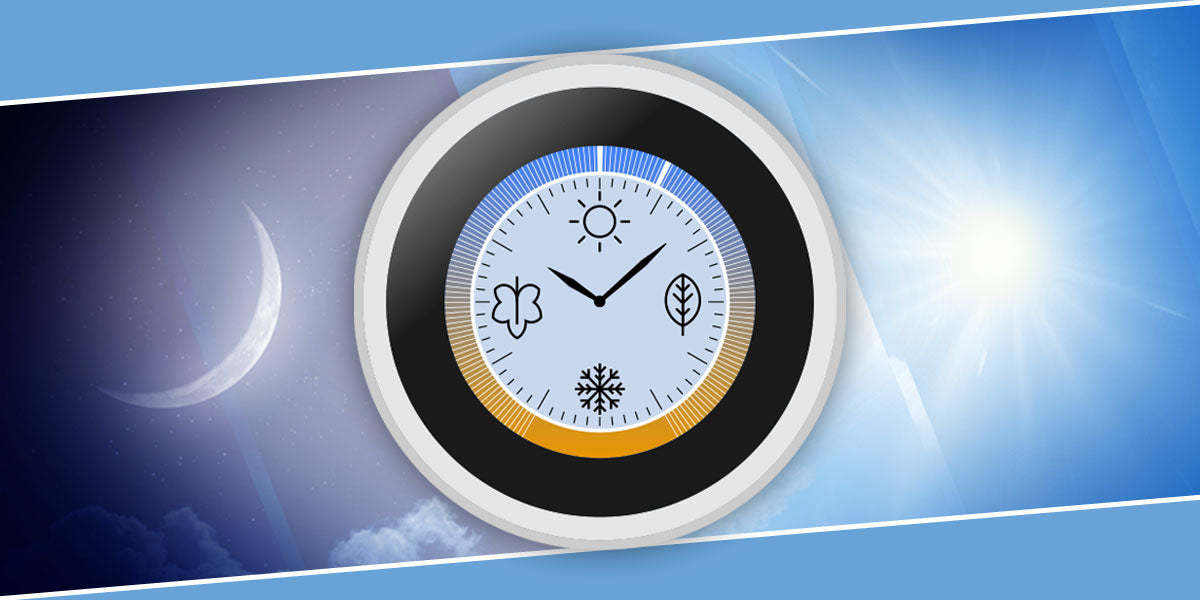As winter approaches and temperatures drop, finding the perfect thermostat setting is crucial for maintaining both comfort and energy efficiency. At MRCOOL®, we believe keeping your home warm shouldn't come at the cost of high energy bills. This guide will help you determine the ideal thermostat settings for winter and provide practical tips to ensure your home stays cozy without unnecessary energy waste.
Optimal Thermostat Settings for Winter
Best Temperature for Comfort and Savings
For an ideal balance of warmth and energy efficiency, set your thermostat between 68°F and 70°F while you’re home and awake. Keeping your heating system within this range prevents excessive energy consumption while ensuring a comfortable indoor environment. Additionally, lowering the temperature by just one degree can reduce your heating bill by about 1%—small adjustments that add up over the season.
Recommended Nighttime Settings
At night, a cooler environment supports better sleep. Setting your thermostat between 60°F and 65°F can promote restful sleep while cutting down on energy costs. If you’re concerned about staying warm, consider using heavier bedding or a heated blanket. For households with children or elderly family members, ensure these lower temperatures remain comfortable for everyone.
Daytime Settings When You’re Away
If your home is unoccupied during the day, set your thermostat to 60°F or lower to conserve energy. A programmable or smart thermostat can help automate these adjustments, ensuring your home warms up just before you return, without running the heating system all day.
Winter Heating Efficiency Tips
Upgrade to a Smart Thermostat
A smart thermostat is a game-changer for home heating efficiency. These devices allow you to:
-
Set automatic schedules
-
Control your thermostat remotely via smartphone
-
Optimize heating based on your daily habits
-
Track energy usage and savings
By intelligently managing your heating, a smart thermostat can significantly reduce waste and lower energy bills.
Gradually Adjust Heat Settings
If you’re used to keeping your home warmer, transitioning gradually can make cooler temperatures feel more comfortable. Lower your thermostat by just one degree every few days to let your body adjust while also cutting costs.
Schedule Furnace Maintenance
Before winter fully sets in, have a professional HVAC technician inspect and service your heating system. Regular maintenance ensures your furnace operates efficiently, reducing the risk of breakdowns and prolonging its lifespan. A well-maintained system heats your home more effectively and safely.
Seal Drafts Around Windows and Doors
Air leaks force your heating system to work harder. To check for drafts, hold a lit candle near window and door frames—if the flame flickers, you likely have a leak. Use weatherstripping or caulk to seal gaps and improve insulation, preventing heat loss and improving energy efficiency.
Optimize Your Thermostat Placement
Your thermostat’s location can impact its accuracy. Place it on an interior wall away from direct sunlight, vents, and appliances that emit heat. An improperly placed thermostat can cause your system to cycle unnecessarily, leading to wasted energy and uneven heating.
The Advantages of a Smart Thermostat
Investing in a smart thermostat is one of the most effective ways to enhance your home's heating efficiency. These devices:
-
Learn your schedule and adjust temperatures accordingly
-
Provide energy usage insights to help you make informed adjustments
-
Use geofencing to detect when you’re away and automatically lower the heat
-
Integrate with smart home systems for seamless control
By optimizing your heating patterns, a smart thermostat can lead to significant savings while keeping your home comfortable.
Conclusion
Finding the right thermostat setting for winter is about striking a balance between comfort and efficiency. By following these recommendations and incorporating smart home technology, you can stay warm while keeping energy costs under control. Whether you’re looking to upgrade to a smart thermostat, improve insulation, or fine-tune your heating habits, these small changes can make a big difference in your home’s warmth and efficiency this winter.

